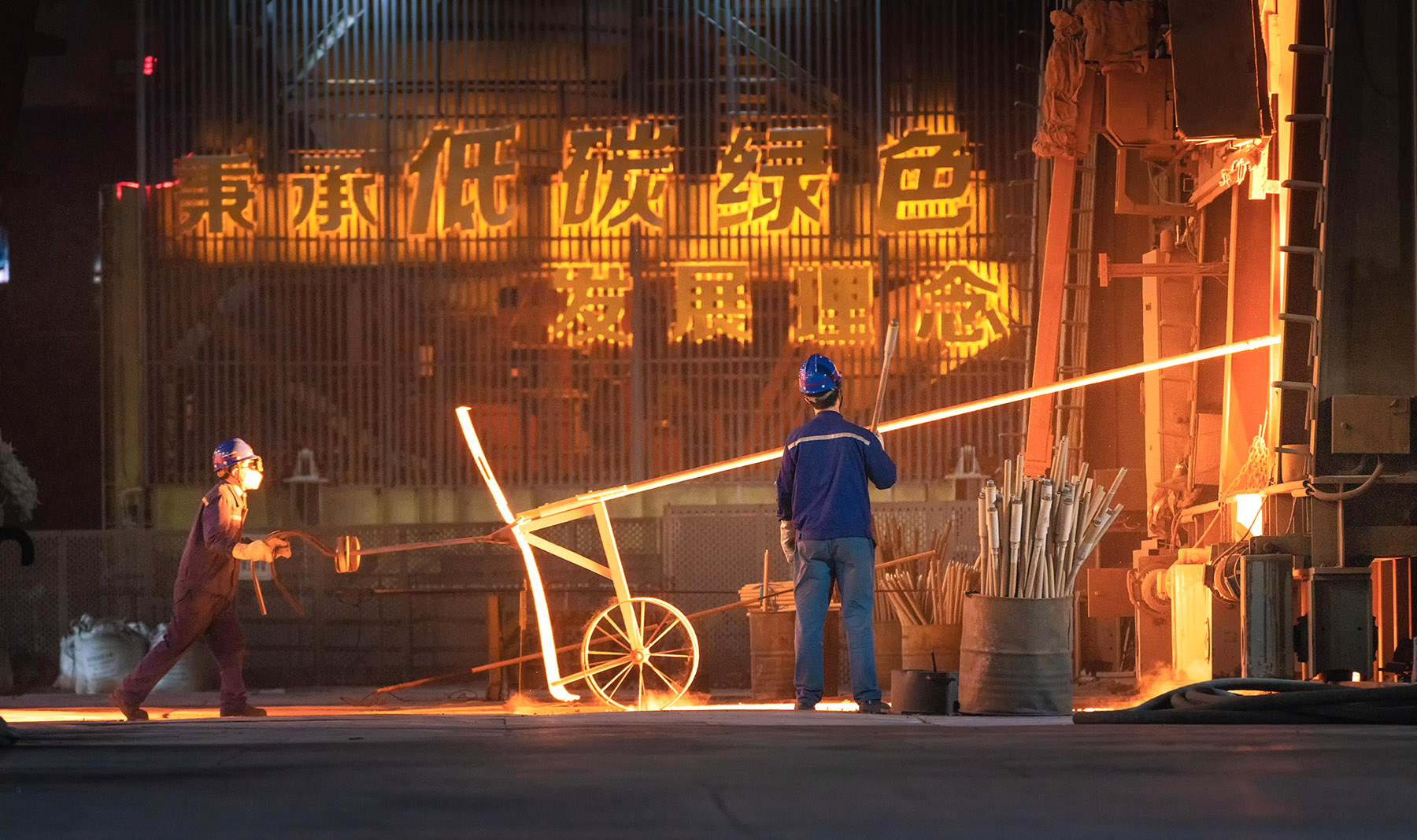Decline in demand for metal used in real estate sector may narrow this year

China's steel industry is forecast to maintain stability this year as the world's second-largest economy is on track for a steady recovery, said industry experts.
"China's steel demand will likely remain steady or report slight growth this year given the country's around 5 percent annual GDP growth target, the recovery in downstream demand, and the move to accelerate fixed-asset investment and promote large-scale equipment renewal and trade-in of consumer goods," said Zhang Longqiang, president of the China Metallurgical Information and Standardization Institute.
Demand for steel in energy and manufacturing industries will keep growing, especially in fields like wind and solar power, nuclear power, new energy vehicles, shipbuilding and marine engineering.
Zhang Longqiang, president of the China Metallurgical Information and Standardization Institute
Zhang said the decline in demand for steel used in the real estate sector may narrow this year, as the country has doubled efforts to promote the construction of government-subsidized housing, build dual-use public infrastructure that can accommodate emergency needs and redevelop urban villages.
Zhang estimated that infrastructure investment will remain stable this year with a growth rate of at least 5 percent, suggesting a steady growth of steel demand for infrastructure construction.
READ MORE: Ministry: China firmly opposes US restrictive measures on Chinese steel, aluminum products
"Demand for steel in energy and manufacturing industries will keep growing, especially in fields like wind and solar power, nuclear power, new energy vehicles, shipbuilding and marine engineering."
Zhang said the implementation of China's plan for driving large-scale equipment renewal and promoting trade-in deals for consumer goods is expected to create an additional over 14 million metric tons of annual steel demand. New urbanization will continue to promote steel buildings and the construction of "new infrastructure" will also boost steel demand, he said.
Data from the National Bureau of Statistics showed that China's crude steel output fell 1.9 percent year-on-year to 257 million tons in the first quarter. Apparent consumption of crude steel decreased by 4.7 percent year-on-year to 232 million tons during the January-March period, said the China Iron and Steel Association.
Jiang Wei, vice-president of the association, attributed the notable decline in apparent consumption of crude steel to factors like the lack of effective downstream demand and a slow demand recovery after the Spring Festival holiday.
"The steel industry still faces challenges like temporary severe imbalances in supply and demand, notable declines in steel prices and rising iron ore prices," he said.
Facing pressures from challenging market situations, the steel industry has been actively accelerating the cultivation of new quality productive forces, and promoting high-end, intelligent and green transition.
Jiang said the demand for steel used in the manufacturing sector has grown over the years, with the sector accounting for 48 percent of the overall steel demand in 2023, up from 42 percent in 2020.
"The steel industry has significantly accelerated the adjustment of its product structure, in a bid to meet the increasing demand for steel used in the manufacturing sector, including fields like automobiles, ships and household appliances," Jiang said.
ALSO READ: Experts stress green upgrade in China's steel sector
According to a survey by the association, 40 percent of surveyed steel enterprises have applied three-dimensional visual simulation technology on major production lines, 79.6 percent have piloted big data models, and 18.4 percent have already deployed partial applications of artificial intelligence. As of April 23, some 136 steel companies completed or partially completed ultra-low emission transformation and assessment monitoring.
Despite challenges ahead, the steel industry will focus on opportunities from rising demand in sectors like manufacturing and energy, Jiang said.
"More efforts should be made to adjust and optimize the offerings and create more high-value items."
Contact the writers at ouyangshijia@chinadaily.com.cn


